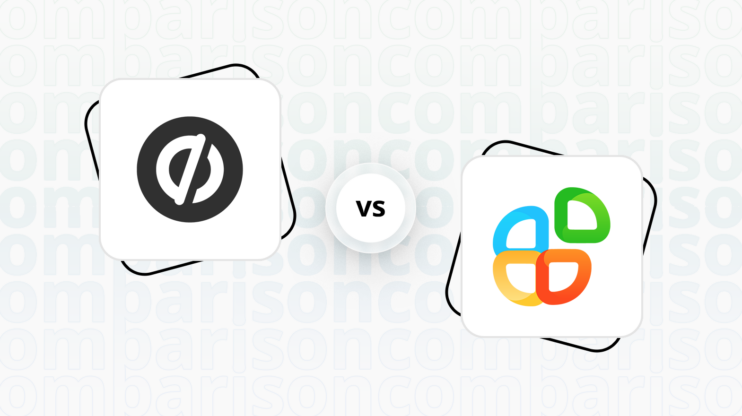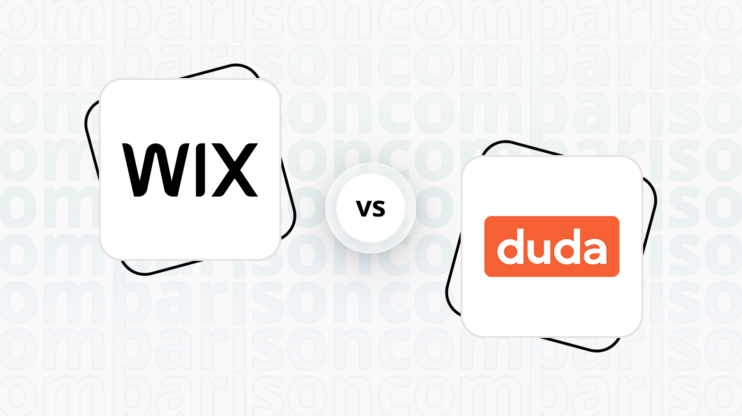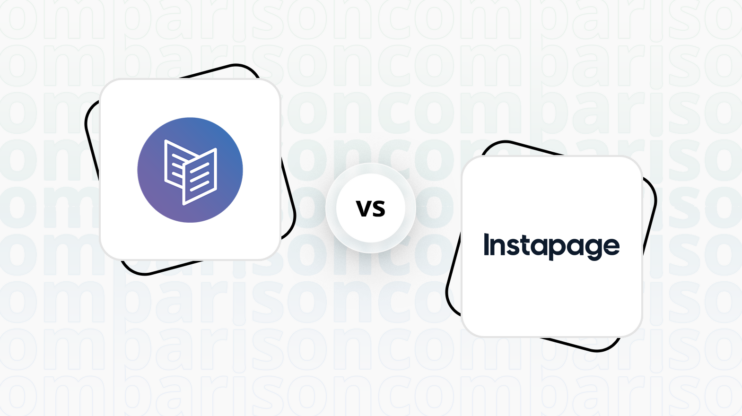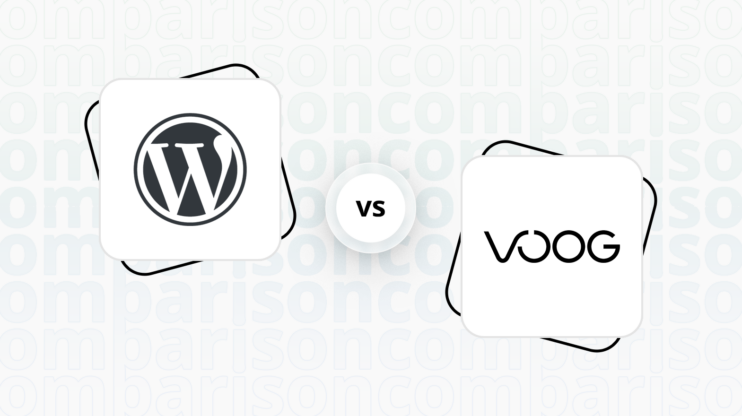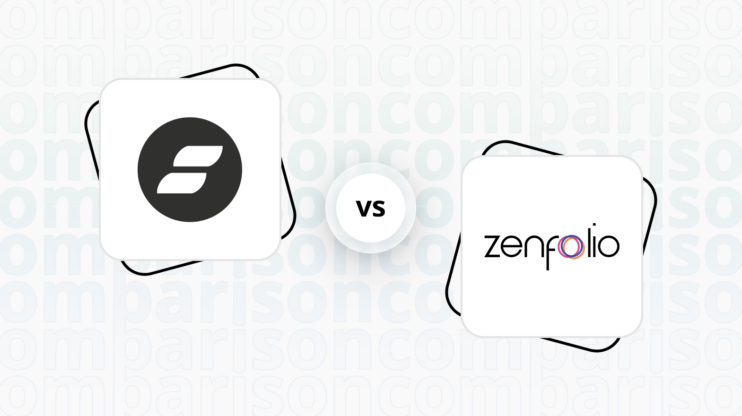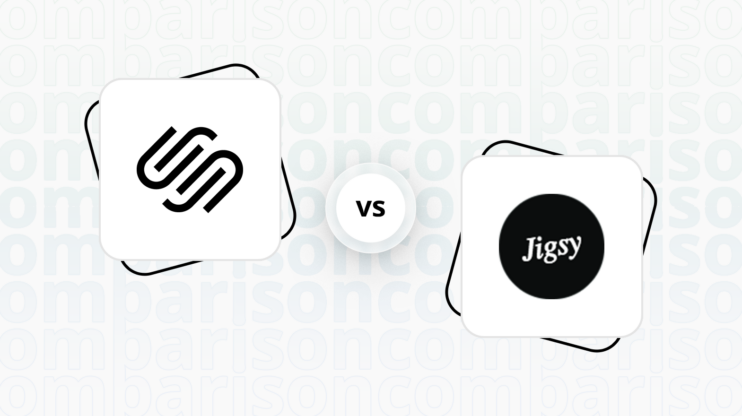Final verdict
Google Sites and Framer both offer unique advantages, but they cater to different user needs and preferences.
-
Google Sites (Overall Grade: 5.6/10)
is ideal for users seeking a simple, collaborative website builder with seamless integration with Google services. It excels in ease of use, making it perfect for team projects, personal portfolios, and small business websites. However, it lacks advanced design functionalities, ecommerce features, and AI capabilities, which may limit its appeal for more complex projects. -
Framer (Overall Grade: 7.1/10)
stands out for its robust design and prototyping features, AI-driven tools, and extensive customization options. It is well-suited for designers and developers looking to create dynamic and engaging web experiences. While it has a steeper learning curve and lacks native ecommerce features, its advanced capabilities and flexibility make it a powerful tool for modern web design.

|

|
|
|---|---|---|
|
Design functionalities & templates |
4.9 |
8.5 |
|
Ease of use |
8.3 |
7.1 |
|
Ecommerce |
1.8 |
5.9 |
|
Website Editors |
7.0 |
7.6 |
|
Product testing options |
6.9 |
6.2 |
|
Price |
8.1 |
7.7 |
|
Hosting quality |
8.2 |
7.1 |
|
Website speed optimization |
3.3 |
7.4 |
|
Plugins/extensions and integrations |
6.4 |
7.6 |
|
Marketing features |
2.6 |
7.2 |
|
Customer support |
7.2 |
5.6 |
|
Website security |
9.3 |
8.2 |
|
AI capabilities |
0 |
7.6 |
|
User Management |
7.8 |
7.4 |
Best for ecommerce
 1.8
1.8
 5.9
5.9
Verdict
: Google Sites and Framer both have limitations in ecommerce, but Framer offers more robust options through integrations.
-
Google Sites
: Google Sites is not designed for ecommerce and lacks built-in features for online stores. Users must rely on third-party tools and integrations to add ecommerce functionalities, which can be cumbersome and limited in scope. This makes Google Sites less suitable for businesses looking to establish a comprehensive online store. -
Framer
: Framer, while not having native ecommerce features, supports integrations like Ecwid to add online store capabilities. This makes it a more viable option for ecommerce compared to Google Sites. Framer’s design flexibility and customization options also provide a better user experience for creating and managing an online store.
Best for informational & business websites
 7.2
7.2
 7.5
7.5
Verdict
: When it comes to creating informational and business websites, Framer slightly edges out Google Sites due to its advanced design capabilities and customization options. However, Google Sites remains a strong contender, especially for users seeking simplicity and seamless integration with other Google services.
-
Google Sites
: Google Sites is an excellent choice for users who need a straightforward, collaborative platform to create informational websites. Its drag-and-drop interface and integration with Google Workspace make it ideal for team projects and small business websites. With a score of 7.2, it offers ease of use and robust security features, although it may lack the advanced design functionalities that some users might require. -
Framer
: Framer, scoring 7.5, is designed for those who want more creative control and advanced design features. It offers a comprehensive component library and AI tools for content generation, making it suitable for both novices and experienced designers. While it has a steeper learning curve compared to Google Sites, its extensive customization options and focus on interactive design make it a powerful tool for creating dynamic and engaging business websites.
Detailed comparison
Design functionalities & templates
Design FunctionalitiesRepresents how well each platform allows for creative design and customization of websites.Score Components:
- Template Variety (30%): Range and quality of design templates.
- Customization (30%): Flexibility and options for design alterations.
- User Interface (20%): Ease and intuitiveness of the design process.
- Responsiveness (10%): Adaptability to different devices and screen sizes.
- Innovation (10%): Unique design features and tools.
 4.9
4.9
 8.5
8.5
🏆
Winner: Framer.
If you’re looking for a platform that offers more creative control and a wide array of design features, Framer is the preferred choice.
Google Sites offers a limited number of templates suitable for various purposes, from personal blogs to business websites, with both free and premium options available. These templates are designed for user engagement, simplicity, and functionality, allowing for customization to meet specific needs.
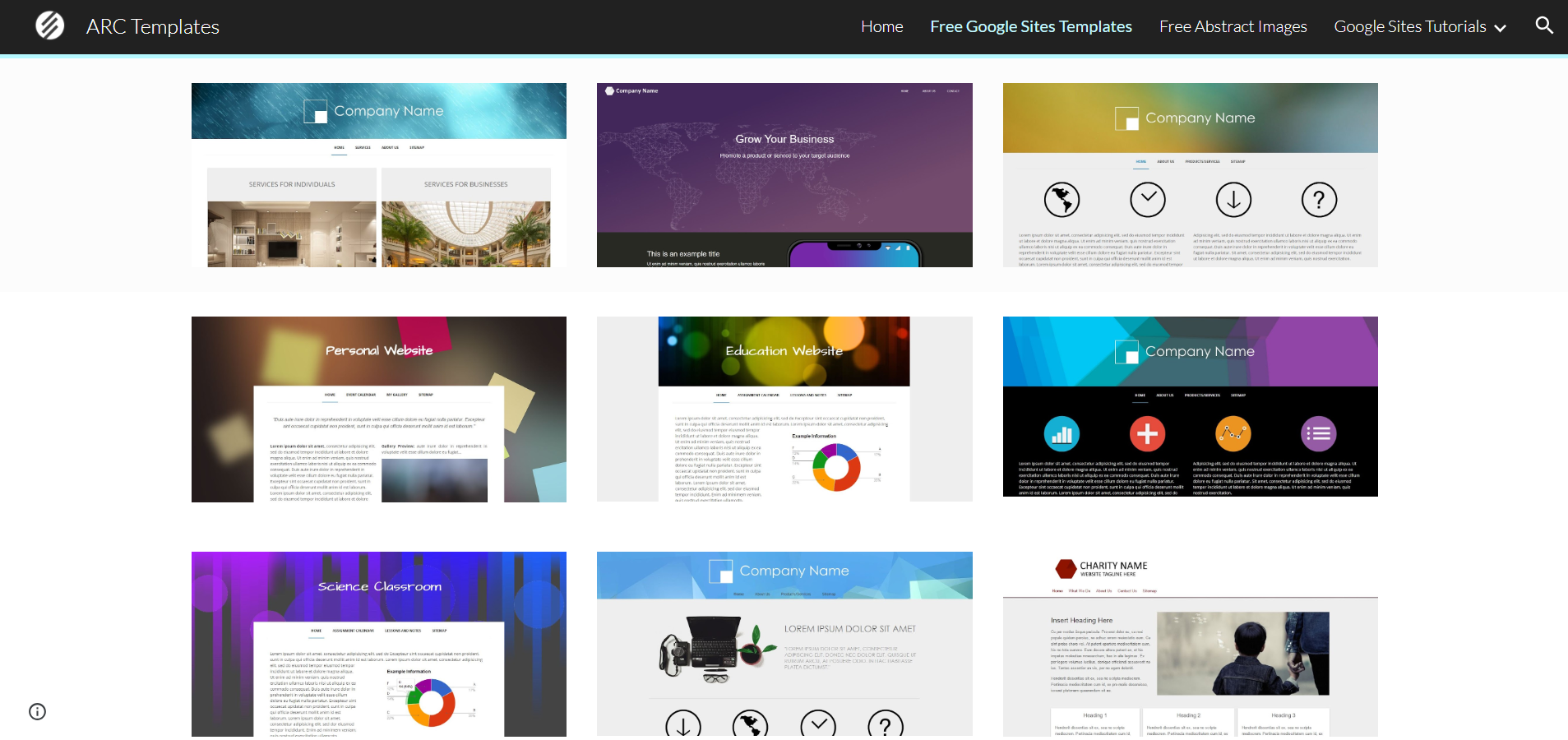
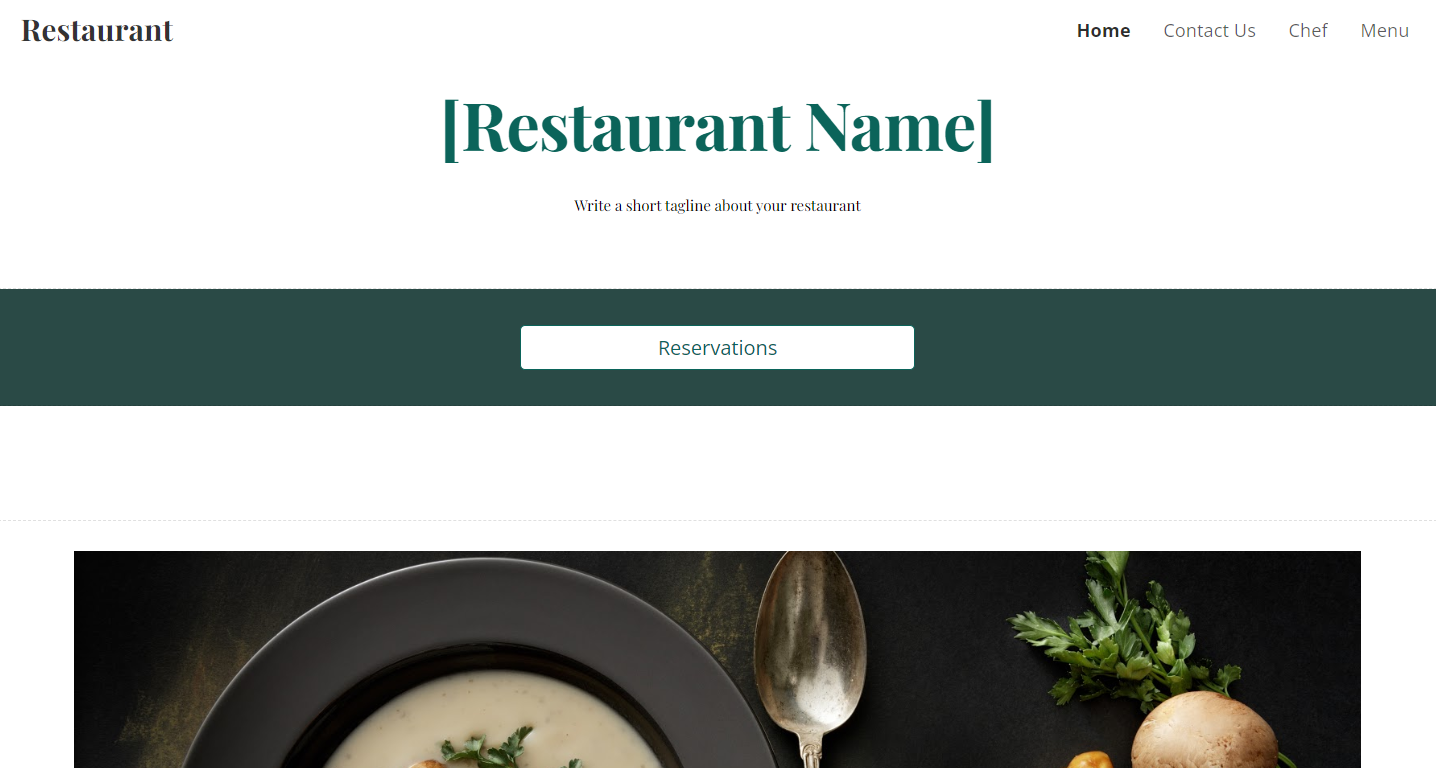
Compared to Google Sites, Framer offers a diverse array of over 1,000 customizable website templates and designs, catering to various industries and project requirements. It stands out for its robust design and prototyping features, including responsive design capabilities, real-time collaboration, and extensive import options from other design tools.
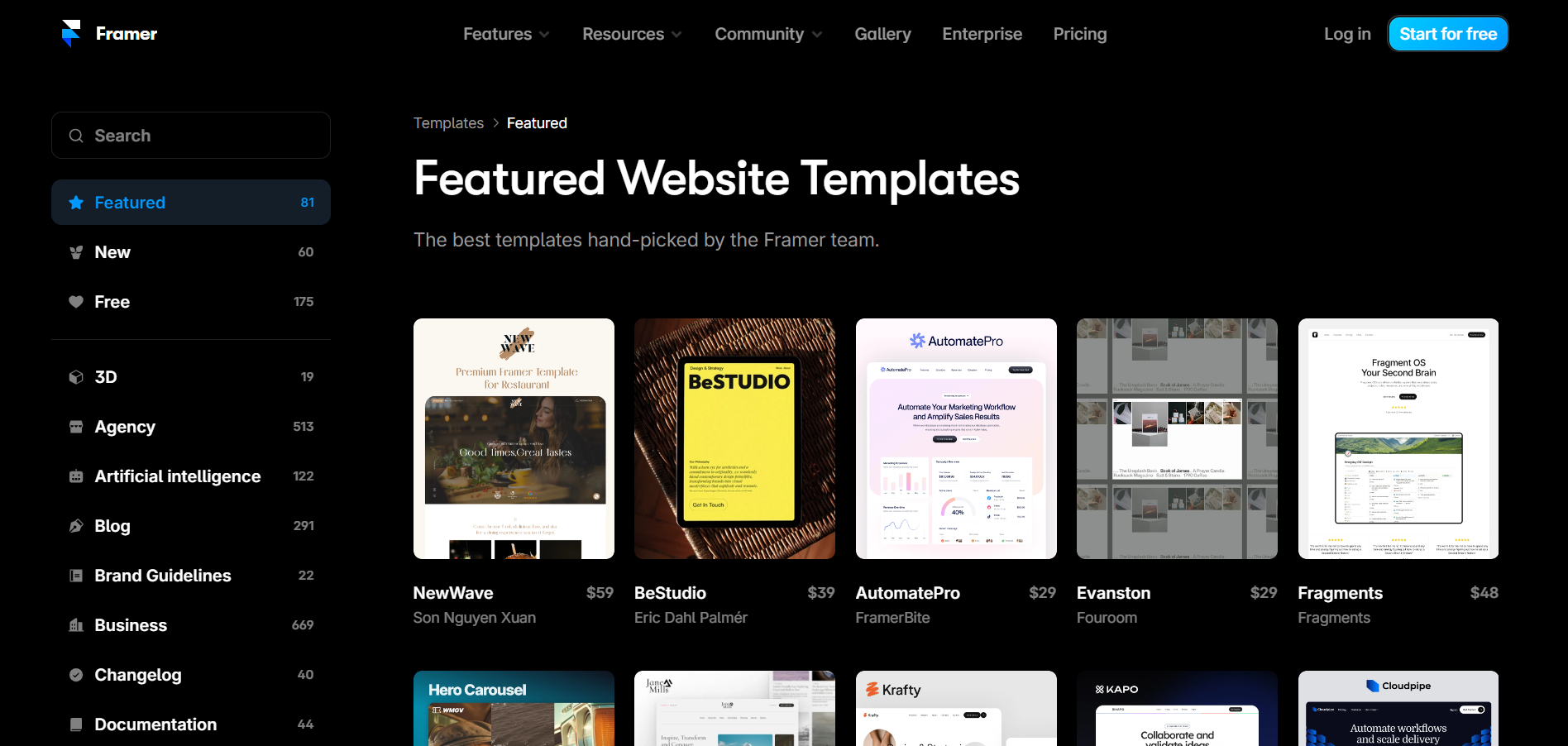

Get a head start on website creation with AI
Create a custom website tailored to your business needs 10X faster with 10Web AI Website Builder!
Ease of use
Ease of useReflects the platform’s overall user-friendliness.Score
Components:
- Learning curve (40%): Quickness and ease of getting started.
- Interface design (30%): Simplicity and intuitiveness of layout.
- User guidance (20%): Quality of tutorials and support.
- Flexibility (10%): Adaptability to various user skills.
 8.3
8.3
 7.1
7.1
🏆 Winner: Google Sites
. With a score of 8.3, Google Sites offers a user-friendly interface that allows individuals with no coding experience to create and publish websites easily. Framer, scoring 7.1, is designed with a focus on interactive design and motion, making it particularly appealing for users interested in creating dynamic and engaging web experiences. However, it may present a learning curve for complete beginners due to its advanced animation and interaction features.
Learning Resources
🏆 Winner: Framer
. Both platforms offer a wide range of learning resources, but Framer goes a step further with its detailed courses and lessons on Framer Academy, covering essential topics like scroll animations, CMS, and localization. Framer University further supports learning through practical tutorials, video lessons, and an extensive collection of free resources.
For ecommerce
EcommerceMeasures the platform’s effectiveness in supporting online business activities.Score Components:
- Ecommerce themes and templates (20%): Variety and design of templates.
- Product management (25%): Ease of managing and organizing products.
- Payment options (25%): Variety and convenience of payment methods.
- Ecommerce features (20%): Features for managing an ecommerce store.
- Integration (10%): Compatibility with external e-commerce tools and services.
 1.8
1.8
 5.9
5.9
When it comes to ecommerce, both Google Sites and Framer have their limitations. Google Sites does not have built-in ecommerce features or tools for setting up an online store directly. However, you can integrate ecommerce functionalities into a Google Sites website by embedding third-party tools or widgets, linking to an external ecommerce platform, or using buttons that link to payment processors. For instance, you could use Google Forms for order forms and integrate PayPal or another payment service for transactions. To have a full-fledged ecommerce platform with Google Sites, you’d need to rely on these external integrations or services.
On the other hand, Framer does not offer native ecommerce features directly within its platform. To facilitate ecommerce, Framer can be paired with Ecwid’s free shopping cart extension, which allows for quick and easy addition of online store functionalities to a Framer website. This integration supports a seamless connection with various payment and shipping options, marketing tools, and a control panel for managing sales and marketing campaigns. However, implementing detailed customizations might require some CSS expertise.

|

|
|
|---|---|---|
|
Ecommerce themes and templates |
0.0 |
7.0 |
|
Product page customization |
0.0 |
5.5 |
|
Payment processing and commissions |
1.0 |
6.5 |
|
POS capabilities |
0.0 |
3.0 |
|
Payment gateways |
2.0 |
6.0 |
|
Product numbers |
0.0 |
6.0 |
|
Additional ecommerce features |
0.5 |
5.5 |
Google Sites ecommerce features:
Google Sites itself does not have built-in ecommerce features.
Framer ecommerce features:
- Ecwid integration
Ecommerce themes & templates
Google Sites does not have any ecommerce templates. On the other hand, Framer offers 97 website templates specifically designed for ecommerce, providing a wide range of options for various business needs. These templates are highly customizable, allowing for easy adjustments to colors, fonts, layouts, and integration with essential ecommerce tools. Both free and paid options are available, catering to businesses of all sizes looking to enhance their online presence and sales capabilities.
Product page customization
Google Sites lacks any product page customization features, as the products can be listed with embedding third-party platforms, all the customization can be done within the mentioned platforms. Framer primarily focuses on expanding design possibilities for ecommerce. However, it lacks inherent ecommerce functionalities and instead heavily depends on integrating with platforms such as Shopify and Ecwid. Additionally, while Framer allows for some customization of product pages, these modifications are generally limited to design and layout alterations.
Payment processing
You can integrate payment gateways into Google Sites using external tools or links, not through native features. This can be done by embedding HTML code for payment buttons from services like PayPal, Square, or Stripe, or by linking to an external checkout page. Third-party ecommerce widgets also offer a way to add payment functionalities. However, Google Sites doesn’t offer the comprehensive ecommerce capabilities that dedicated platforms provide.
Framer supports Stripe for payment processing, enabling a wide range of payment options including one-time payments, subscriptions, and more, without requiring coding. While specific transaction fees were not mentioned, such fees typically depend on Stripe’s pricing. Framer’s focus is on online transactions and e-commerce integrations, and there’s no explicit mention of native POS functionality. For the most current details on fees and features, it’s recommended to consult directly with Framer or Stripe.
Website Editors
Website EditorsEvaluates the platforms’ website building and editing capabilities.Score Components:
- Customization tools (40%): Range and power of editing features.
- Editor usability (30%): User experience within the editor.
- Design flexibility (20%): Freedom in layout and design changes.
- Update and maintenance ease (10%): Simplicity of updating and maintaining the site.
 7.0
7.0
 7.6
7.6
🏆
Winner: Framer
. Framer, with a score of 7.6, offers a website builder editor designed for high-fidelity prototyping and complex animations, catering to both designers and developers. It provides a robust set of tools for creating interactive and responsive designs, including a wide array of pre-built components, real-time collaboration features, and the ability to integrate with other design tools and workflows.
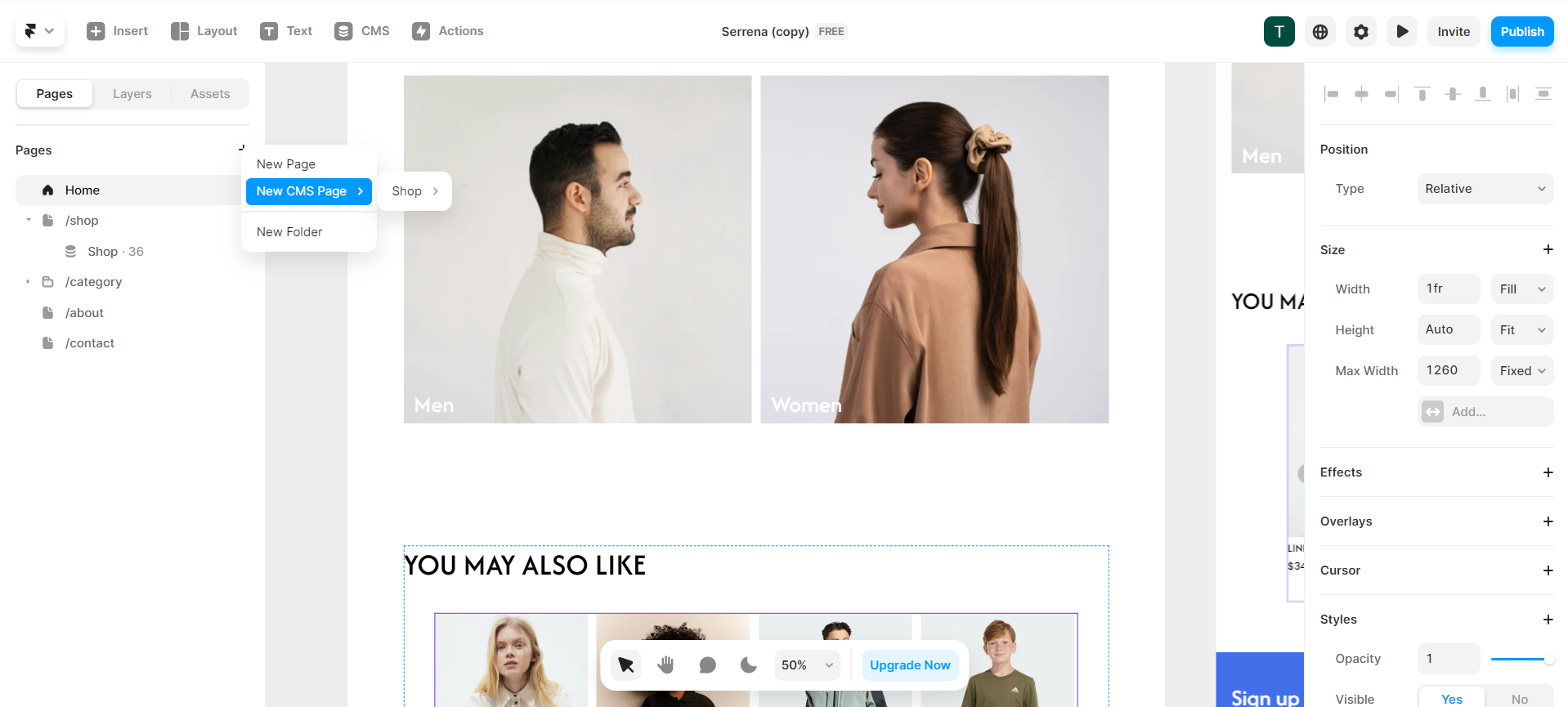
Google Sites, scoring 7.0, offers a user-friendly website builder editor that allows users to create and design websites without needing coding knowledge. With its drag-and-drop interface, users can easily add, customize, and arrange elements such as text, images, and videos on their web pages. It also provides a variety of templates and design options to help users get started quickly and ensure their site looks professional.
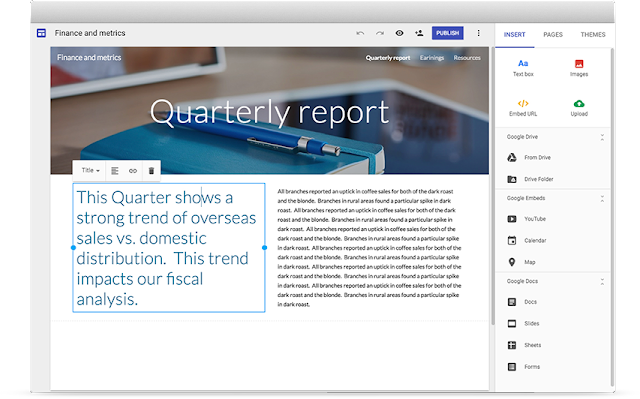
Mobile editor/app
 0
0
 4.5
4.5
🏆
Winner: Framer
. Both Google Sites and Framer do not offer a dedicated mobile editor app. However, Framer allows users to modify their website using a mobile browser, although this comes with certain restrictions and is notably inconvenient. On the other hand, Google Sites does not provide any mobile editing capabilities. Therefore, Framer has a slight edge over Google Sites in terms of mobile editing, despite the limitations and inconveniences.
Product testing options
Product Testing OptionsAssesses the options for trying out platform features before commitment.Score Components:
- Trial quality (40%): Extent and usefulness of the trial or free version.
- Feature accessibility (30%): How many features are available to test.
- Trial duration (20%): Length of the trial period.
- Ease of transition (10%): Smoothness of moving from trial to paid plans.
 6.9
6.9
 6.2
6.2
Overall Result
:
Google Sites scores slightly higher than Framer with a score of 6.9 against 6.2
. Both platforms offer a free version, but Google Sites also provides a 14-day free trial, allowing users to test some premium features. Framer, on the other hand, does not offer a trial version, but users can test some features with the free version. Framer offers a money-back guarantee, but only in some regions and within 14 days.

|

|
|
|---|---|---|
|
Free Plan |
Yes | Yes |
|
Trial Duration |
14 days | No |
|
Testing Premium Features |
Possible within trial period | Possible with free version |
|
Money Back Guarantee |
No | Yes (Only in some regions, within 14 days) |
Price
PriceLooks at the cost-effectiveness and value for money of each platform.Score Components:
- Plan value (40%): What each pricing tier offers.
- Transparency and clarity (30%): Clearness of pricing structures.
- Flexibility of plans (20%): Range of options to suit different budgets.
- Hidden costs (10%): Additional expenses not included in the plan.
 8.1
8.1
 7.7
7.7
Google Sites and Framer offer different pricing structures, with Google Sites charging per user and Framer offering tiered plans.
Both platforms offer discounts for annual billing, with Framer offering a more significant discount depending on the plan.

|

|
|
|---|---|---|
|
Free |
No offering at this amount. |
Free (Free/month): Allows 3 websites built on a framer.website subdomain with Framer branding in the footer. Limited to 1,000 traffic visitors and 1,000 CMS items. |
|
$5-$12 |
Business Starter ($7.20/month): This plan includes basic features suitable for individuals or small businesses, offering professional email through Gmail, 30GB of storage per user, and video meetings for up to 100 participants. It allows to manage 1 website and there is no limitation on number of pages. Value for price: 6.0 |
Mini ($10/month): Removes Framer branding, allows using a custom domain, includes collaboration with an additional cost for extra editors, custom code embedding, e-commerce support, and limited CMS items. Offers a monthly visitor limit of 2,000 and 1GB bandwidth. Value for price: 6.5 |
|
$10-$20 |
Business Standard ($14.40/month): Suitable for growing businesses, this plan provides 2 TB of storage per user, video meeting capacity for up to 150 participants with recording features, and access to smart booking pages and shared drives. It allows to manage 1 website and there is no limitation on number of pages. Value for price: 7.5 |
No offering at this amount. |
|
$20-$30 |
Business Plus ($21.60/month): Designed for larger businesses needing more robust capabilities, offering 5 TB of storage per user, advanced security options, and video meetings for up to 500 participants. It allows to manage 1 website and there is no limitation on number of pages. Value for price: 8.5 |
Basic ($20/month): Offers all Mini features plus increased limits for CMS items (1,000) and traffic (10,000 visitors per month), along with 10GB bandwidth. Value for price: 7.5 |
|
$30+ |
No offering at this amount. |
Pro ($30/month): Enhances Basic plan features with a significant increase in CMS items (10,000), traffic (100,000 visitors per month), and bandwidth (100GB), among other advanced features. Value for price: 8.5 |
location. As a result in rare cases the prices displayed here can differ from the ones you see on their
websites.
Hosting quality
Hosting
qualityExamines the reliability and performance of the hosting solutions.Score Components:
- Uptime (40%): Consistency and reliability of website availability.
- Speed (30%): Loading times and performance.
- Bandwidth and storage (20%): Sufficiency of resources provided.
- Data centers (10%): Quality and distribution of hosting infrastructure.
 8.2
8.2
 7.1
7.1
Winner: Google Sites
. Google Sites offers basic storage with 100MB free per site, which can be increased by upgrading to Google Workspace. It guarantees an uptime of 99.9% for all plans and operates 21 data centers globally. On the other hand, Framer includes hosting in all their plans, with 100MB to 100GB SSD storage depending on the plan, and guarantees an uptime of 99.9% only for the enterprise plan. It operates 4 data centers globally.

|

|
|
|---|---|---|
|
Do they offer hosting? |
Yes, basic storage with 100MB free per site, can be increased by upgrading to Google Workspace |
Yes, included in all their plans, with 100MB to 100GB SSD storage depending on the plan |
|
Data Centers: |
Google operates a total of 21 data centers across the globe: 2 in Asia, 5 in Europe, 13 in US and 1 in South America |
4 data centers globally: 2 in US, 1 in Ireland, 1 in Singapore |
|
Type of hosting: |
Cloud based managed hosting |
Cloud Hosting |
|
Uptime: |
99.9% |
99.9% |
|
Uptime Guarantee: |
Yes, 99.9% |
Only for enterprise plan, 99.99% |
Website Speed Optimization
Website Speed OptimizationEvaluates optimization of website loading timesScore Components:
- PageSpeed Score (30%): Google’s score indicating performance optimization.
- Loading Time (30%): The average time until a website is fully interactive.
- Mobile Optimization (15%): Optimization effectiveness for mobile devices.
- Resource Optimization (15%): Optimizing images, scripts, and other heavy resources.
- CDN Usage (10%): Use of CDN to enhance speed across geolocations.
 3.3
3.3
 7.4
7.4
🏆 Winner: Framer
Both Google Sites and Framer place a high priority on website performance and page speed, with Google Sites focusing on automated optimization, CDN, mobile optimization, browser caching, code minification, and use of AMP, and Framer emphasizing code minification, pre-rendering, caching, and image optimization. However, Framer gets the edge when it comes to website speed optimization.

|

|
|
|---|---|---|
|
Focus |
Automated Optimization, CDN, Mobile Optimization, Browser Caching, Code Minification, Use of AMP |
Code Minification, Pre-Rendering, Caching, Image optimization |
|
Performance Tools |
Google Lighthouse, PageSpeed Insights |
Google PageSpeed Insights Integration |
|
Key Strategies |
Automated Optimization, CDN, Mobile Optimization, Browser Caching, Code Minification, Use of AMP |
Code Minification, Pre-Rendering, Caching, Image optimization |
|
Load Times |
Google does not disclose statistics about website Page Speed scores, or load times |
Load times and PageSpeed scores vary depending on optimization and website complexity |
|
Page Speed Scores Range |
Google does not disclose statistics about website Page Speed scores, or load times |
Load times and PageSpeed scores vary depending on optimization and website complexity |
|
Core Web Vitals Improvement |
Emphasis on LCP, FID, CLS improvements |
Emphasis on LCP, FID, CLS improvements |
Framer, with its focus on code minification, pre-rendering, caching, and image optimization, provides a more robust set of tools for website speed optimization. While Google Sites also emphasizes speed optimization, it does not disclose specific statistics about website Page Speed scores or load times, making it difficult to assess its performance in this area. Both platforms place a strong emphasis on improving Core Web Vitals, including Largest Contentful Paint (LCP), First Input Delay (FID), and Cumulative Layout Shift (CLS).
Get a head start on website creation with AI
Create a custom website tailored to your business needs 10X faster with 10Web AI Website Builder!
Plugins and integrations
Plugins and integrationsMeasures the range and effectiveness of additional plugins and integrations.Score Components:
- Variety of options (40%): Range of available add-ons.
- Integration smoothness (30%): Ease of integrating plugins into the site.
- Quality of plugins (20%): Functionality and reliability of the options.
- Custom integration capabilities (10%): Support for custom or third-party integrations.
 6.4
6.4
 7.6
7.6
🏆 Winner: Framer.
Framer, with a score of 7.6, offers a variety of plugins that cater to different needs such as forms, video & animation, social media integration, audio, and utility functions. These plugins include integrations with platforms like Vimeo, MP4, Lottie, GIPHY, Instagram, Twitter, Google Maps, Trustpilot, Spotify, SoundCloud, Apple Music, and more. The plugins are designed to enhance the functionality of websites created with Framer, allowing users to drag and drop these features onto their web pages, customize them, and connect them to their content or service.
On the other hand, Google Sites, scoring 6.4, offers a wide array of plugins and extensions to enhance website functionality, catering to various needs such as social media integration, e-commerce, chats, forms, video, audio, and more. Elfsight, for example, provides over 70 plugins, including popular choices like Instagram Feed, Google Reviews, WhatsApp Chat, Social Feed, and All-in-One Chat. Common Ninja also offers a variety of widgets, ranging from News Tickers and Google Reviews to more innovative options like 3D Cards, PDF Flipbooks, and Virtual Tours, enhancing website engagement and functionality.

Marketing Features
Design FunctionalitiesRepresents how well each platform allows for creative design and customization of websites.Score Components:
- Template Variety (30%): Range and quality of design templates.
- Customization (30%): Flexibility and options for design alterations.
- User Interface (20%): Ease and intuitiveness of the design process.
- Responsiveness (10%): Adaptability to different devices and screen sizes.
- Innovation (10%): Unique design features and tools.
 2.6
2.6
 7.2
7.2
🏆
Overall Winner: Framer
. Framer offers more comprehensive marketing features, including email marketing and blogging, which Google Sites lacks. Both platforms offer SEO tools and social media integration, but Framer’s features are more advanced.

|

|
|
|---|---|---|
|
SEO Tools |
Basic SEO settings | Advanced SEO optimization features |
|
Email Marketing |
✗ | ✓ (through Mailchimp integration) |
|
Blogging |
✗ | ✓ |
|
Social Media Integration |
Basic social media integration | Advanced social media integration |
|
Analytics and Reporting |
Google Analytics integration | Robust analytics and reporting suite |
|
Ads and Promotions |
✗ | ✗ |
Customer Support
Customer supportEvaluates the quality and availability of support options.Score Components:
- Response time (40%): Speed of support responses.
- Support quality (30%): Effectiveness and helpfulness of the support.
- Availability (20%): Range of support channels (phone, chat, email).
- Resource richness (10%): Quality of self-help and educational materials.
 7.2
7.2
 5.6
5.6
🏆 Winner: Google Sites
. In the comparison of Google Sites vs Framer, Google Sites takes the lead with a customer support score of 7.2. Google Sites offers a comprehensive support system, including a Help Center, community forums, and 24/7 direct support for Google Workspace customers. This ensures that users have access to the assistance they need, whether through self-service resources or direct support channels.
Framer, on the other hand, has a customer support score of 5.6. It primarily relies on self-help options such as a community forum and knowledge base. While users can email Framer’s support team, the lack of detailed information about their availability and working hours may be a drawback for some users. Overall, Google Sites provides a more robust and accessible support system compared to Framer.
Security
SecurityLooks at the platforms’ security measures and data protection.Score Components:
- Data protection (40%): Safeguards for user and customer data.
- SSL and encryption (30%): Implementation of secure connections.
- Compliance (20%): Adherence to industry security standards.
- Regular updates (10%): Frequency of security updates and patches.
 9.3
9.3
 8.2
8.2
🏆
Winner: Google Sites
. Google Sites, with a security score of 9.3, offers robust security measures including SSL encryption, two-factor authentication, and automatic malware scanning. It also benefits from Google’s regular security updates and compliance with international data protection standards. Google Sites’ infrastructure offers DDoS protection and data redundancy, ensuring a secure environment for website creators and visitors.
Framer, with a security score of 8.2, also takes security seriously. It uses Amazon Web Services for hosting and ensures data is encrypted at rest. Framer emphasizes product security through secure development practices, external security testing, and a bug bounty program. However, it falls slightly short when compared to the comprehensive security measures of Google Sites.
AI Capabilities
AI capabilitiesMeasures the effectiveness of AI-driven features and tools.Score Components:
- Automation efficiency (40%): Impact of AI on streamlining processes.
- Personalization (30%): AI-driven customization for users or customers.
- AI-Assisted design (20%): Role of AI in website design and functionality.
- Data analysis (10%): Use of AI in interpreting user data and analytics.
 0
0
 7.6
7.6

|

|
|
|---|---|---|
|
AI Builder |
|
Yes |
|
AI Ecommerce features |
|
|
|
AI Content Generation |
|
Yes |
|
Additional AI Features |
|
Yes |
🏆 Winner: Framer
. Framer, with a score of 7.6, offers a range of AI capabilities that significantly enhance the website building process. Its AI builder simplifies the creation and optimization of web content. The AI content generation features, including AI Translation, Text Rewrite, and Headline Generator, provide robust solutions for content creation and localization. Additionally, Framer’s AI Style and AI Photo Generating and Editing tools offer high customization and instant image creation capabilities, making it a powerful tool for modern web design.
Google Sites, on the other hand, does not have any AI capabilities, which limits its functionality compared to Framer.
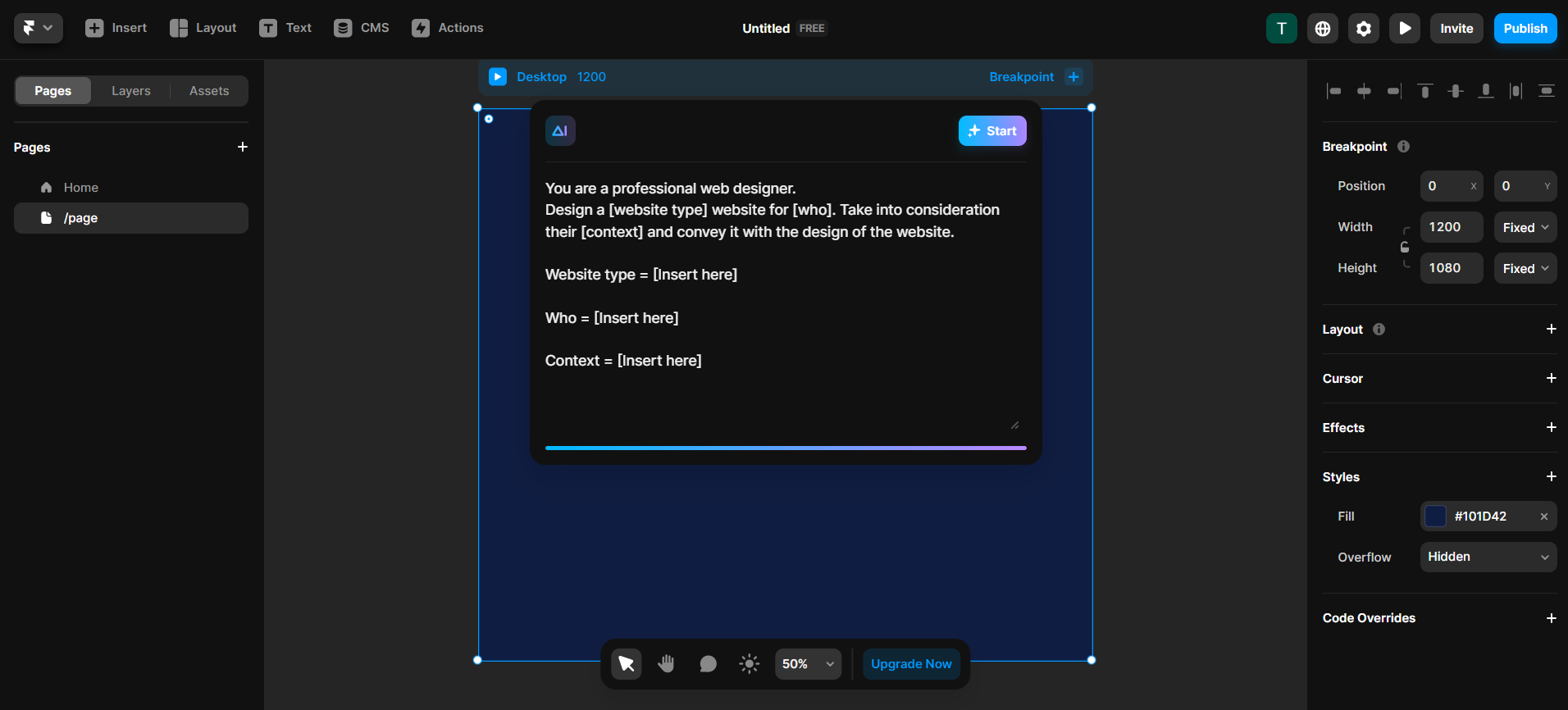
User Management
User ManagementAssesses the platforms’ capabilities in managing user roles, permissions, and accessibility.Score Components:
- Role Customization (40%): Flexibility in creating and defining user roles and
permissions. - Ease of Management (30%): User interface and tools for managing users.
- Access Control (20%): Effectiveness of access control measures for different user
levels. - Scalability (10%): Ability to manage a growing number of users efficiently.
 7.8
7.8
 7.4
7.4
🏆 Winner: Google Sites
. Both Google Sites and Framer offer collaborative website building with varied levels of access and control for different users. However, Google Sites edges out Framer with a slightly higher user management score.
- Google Sites allows multiple users to collaborate with different roles, including Owners, who have full control, and Editors, who can modify content but not site settings. There’s no strict limit on the number of users who can edit a site.
- Framer supports team collaboration with different plans allowing a varying number of editors; the Team Basic plan allows up to 5 editors, while the Team Pro plan supports up to 10 editors. These plans come with additional features like live collaboration, comments, file storage, and extended version history.
Framer User Roles and Access Levels:
| Role | Description | Access Highlights |
|---|---|---|
| Designer | Focuses on the aesthetic and UI/UX aspects of the website. | Can create and modify design elements, utilize animation libraries like Framer Motion, and implement accessibility settings. |
| Content Editor | Manages and curates content for the website, including text, images, and other media. | Can edit CMS content, use localization features for different regions, and modify SEO settings. |
| Developer | Works on more technical aspects, such as custom code and integrations. | Has access to deploy options, can use custom domains, manage project permissions, and apply custom code for further optimization. |
| Project Manager | Oversees the project, coordinating between different roles and ensuring the project meets its deadlines and goals. | Can invite collaborators, assign roles and permissions, and manage versions and rollbacks for efficient site management. |
| Collaborator (General) | A role that can encompass various levels of access based on project needs, including design, content, and deployment tasks. | Access can be customized to include a mix of design, content, and deploy permissions based on the project’s needs and the individual’s role within the team. |
Additional Features

|

|
|
|---|---|---|
|
SSL Certificate |
|
|
|
Custom Domain |
|
|
|
Free Custom Domain Included |
|
|
|
International Domains |
|
|
|
Mobile Responsive |
|
|
|
Page Speed |
|
|
|
Website Builder Mobile App |
|
|
|
Convert a Website To An App |
|
|
|
Website Analytics |
|
|
|
Multilingual Sites |
|
|
|
Multiple Users |
|
|
User Feedback
Users consistently praise Google Workspace, particularly Google Sites, for its seamless integration, ease of use, and collaborative features, making it a go-to solution for various professional and educational needs. The platform’s simplicity and user-friendly interface are lauded, enabling effortless website creation and sharing of information within organizations. While some users desire more customization options and additional features, overall, Google Workspace remains highly valued for its versatility and streamlined workflow facilitation.
Framer receives high marks for its user-friendly, no-code approach to web and prototype design, offering extensive tutorials, templates, and drag-and-drop functionalities that expedite the design process. Users appreciate its integration with tools like Figma, AI-generated responsive designs, and real-time collaboration features. Critiques focus on a steep learning curve for newcomers and limitations in customer support and features without premium access. Despite these drawbacks, Framer is lauded as a powerful design tool that enhances creativity and efficiency in web development.
The making of this blog
We followed a clear, step-by-step process to write and research this article.
FAQ
Which platform is better for beginners, Google Sites or Framer?
Can I use both Google Sites and Framer for ecommerce projects?
How do Google Sites and Framer differ in terms of design flexibility and customization?
What are the major differences in pricing and value between Google Sites and Framer?
Which platform offers better support and learning resources?










